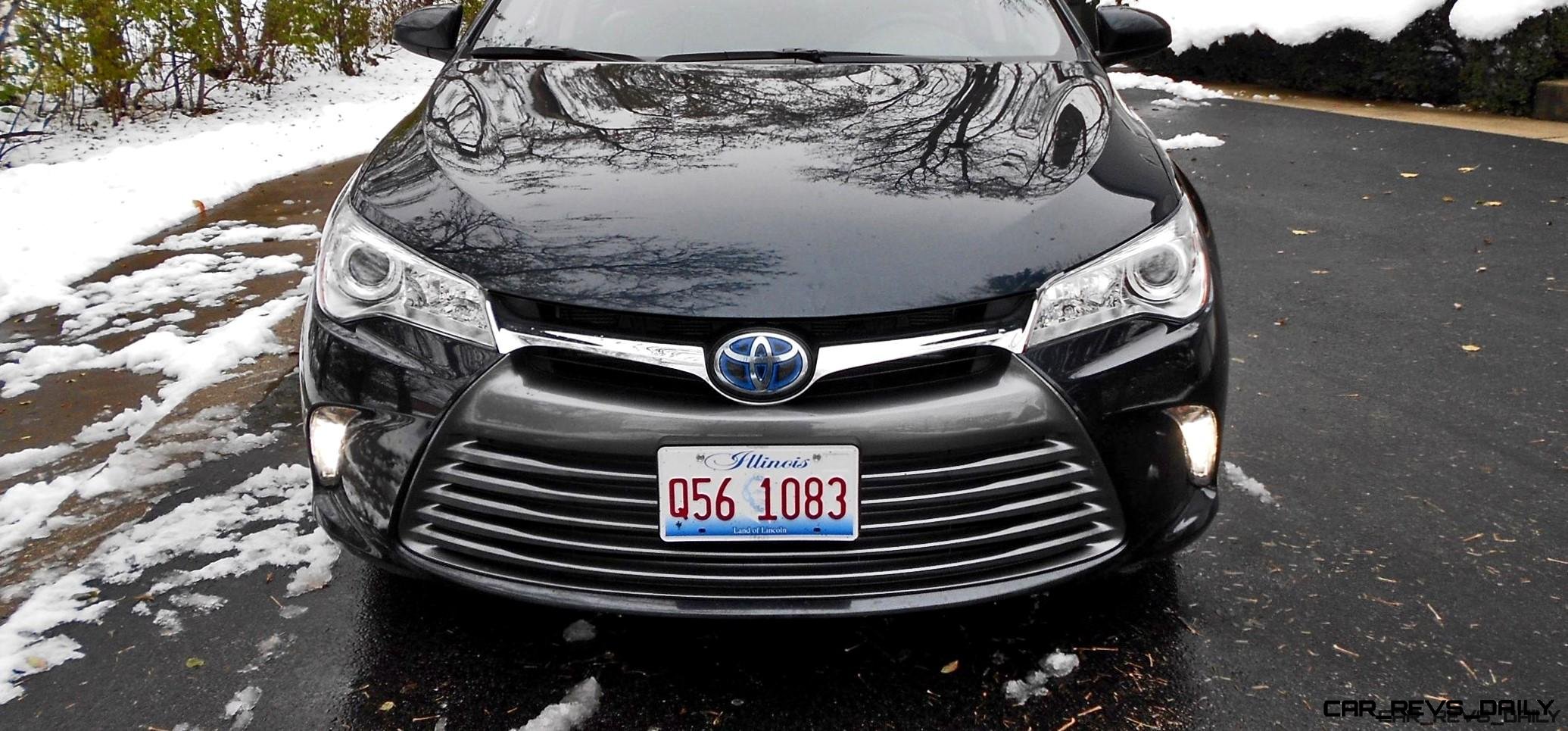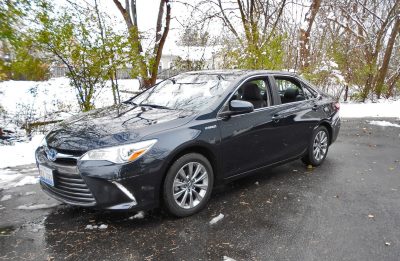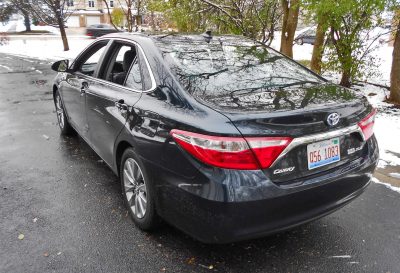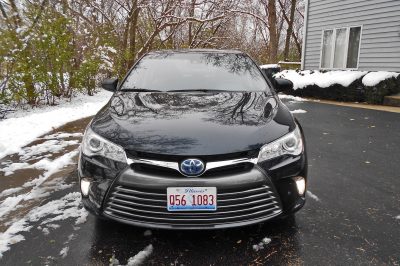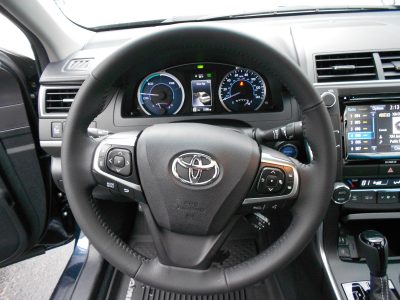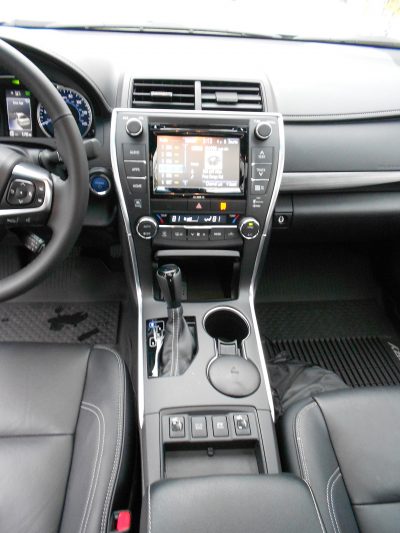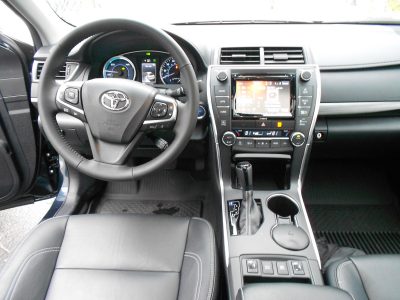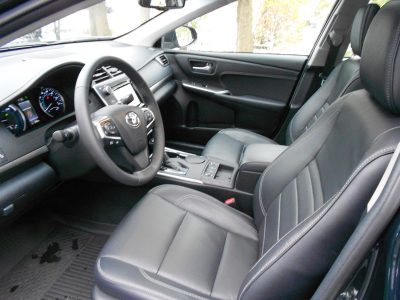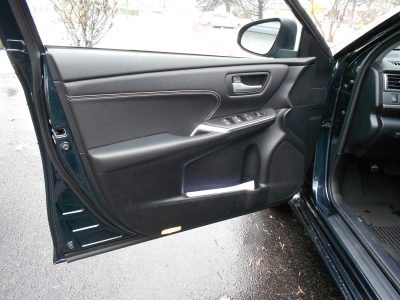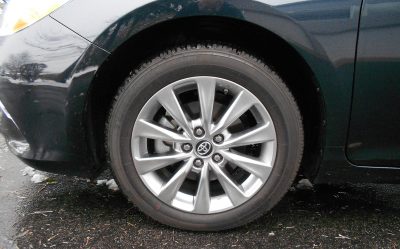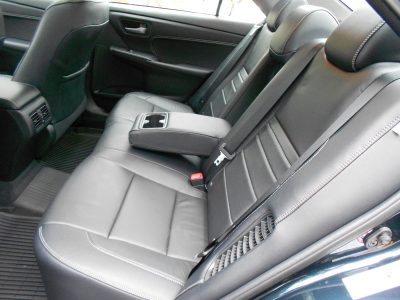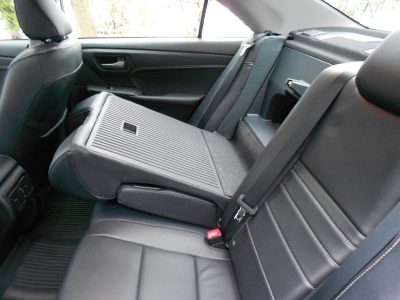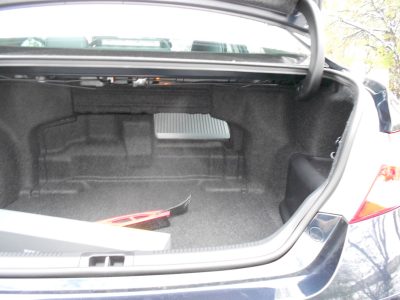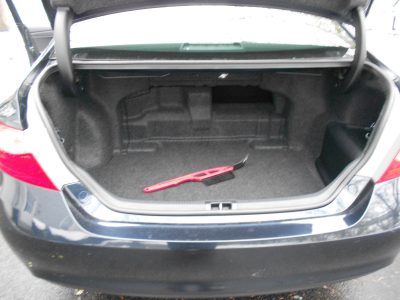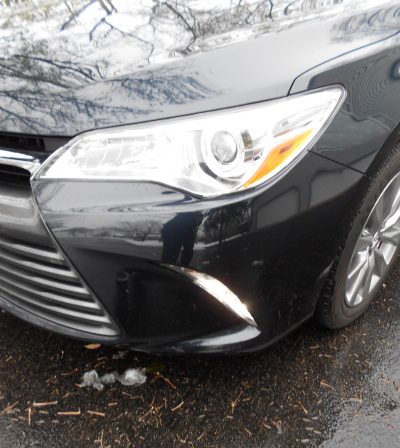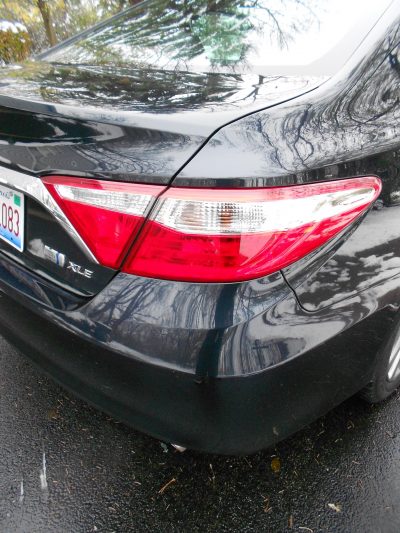Unless you are a newborn baby, (and someone is reading this to you) or you’ve been living in a cave for the last 25 years,
you are familiar with Toyota’s Camry.
For decades, it has either been the best-selling mid-size family sedan in the US, or one of the top three.
It used to compete with only a handful of competitors, but in today’s world, every manufacturer has an excellent mid-size family sedan.
And yet, the trusty Camry still soldiers on, and always lands at the top of the sales charts. And helping those sales figures is the Hybrid version of this trusty steed, for those who want to save money on gasoline, and save the time it takes to stop more often at a gas station to refuel.
And Toyota knows hybrids. They’ve been building them successfully for decades with the Prius, and then on to more and more of their other models in recent years. Perhaps one reason the Camry sells so many hybrid powered cars is because people are comfortable knowing the reliability of their hybrid technology is proven from years of building them.
The Camry had a complete makeover two years ago, and the 2017 model carries over from then and adds some new things. This top trim XLE model now has a premium JBL audio system, a wireless smart phone charging pad, and Entune Audio Plus, with a complete app suite.
Exterior styling has never been a strong point for the Camry. It is pleasantly shaped and attractive, but it will not stand out in a parking lot. It definitely flies under the radar, unlike the Ford Fusion or Hyundai Sonata.
The hybrid power is a combination of a 2.5-liter, four-cylinder engine, with an electric motor. Together they deliver up to 200 horsepower. Expect zero to 60 times in under 8 seconds, which isn’t bad for a vehicle this size, and better than the standard four-cylinder engine.
Power goes to the front wheels via a Continuously Variable, Transmission (CVT), which is excellent. From a standing start, you can press the accelerator to the floor, and reach 75 miles per hour with no perceptible gear changes – just smooth, strong, seamless acceleration. And it’s pretty quiet as well. But the best part of the drivetrain is the gas mileage . . . 40 mpg City and 37 mpg Highway. We experienced closer to 40 on the highway.
The Camry’s suspension is tuned for a soft supple ride quality on any pavement conditions. Therefore, you’ll get more body lean in turns and some front end dive from the excellent brakes. So this isn’t the sportiest driving hybrid out there, but that’s the way Toyota wants it, and apparently so do their customers. No points off for knowing your marketplace and providing what they want. And the transition from all electric mode to gas power is smooth and seamless as well.
The cabin upgrades from the last makeover means better quality materials. The leather is supple and the seats are comfortable and handsome. They are heated, and get hot very quickly. Also, you can also feel the heat on the lower portion of the seatback, which many heated seats lack.
Soft touch materials are in the right places, and the layout of the controls and drivers gauge package is simple and easy to read and operate. I like the fact that you don’t have to use the 7” touch screen to operate the dual-zone heating/cooling controls, the radio, or heated seats. The steering wheel controls for radio, phone, and info screen are also intuitive and easy to work. I wish it offered a heated steering wheel, though.
Not as friendly is the voice commands for the Navigation system. They simply didn’t work at all, which unfortunately is not unusual for most automakers systems. Although the Ford Edge I tested a week earlier earned perfect marks for their Navigation voice command.
Another problem I had was with the XM radio. For some reason, after the first two days, when I turned on to XM, I got no reception, only a flash on the radio reading “check antenna”. I switched to FM, and the same thing. AM radio did work however.
After 20 minutes or so, the XM came back on, but only worked sporadically after that. The Owner’s Manual gave no clue as to what one was supposed to check about the antenna. I did, however, learn that there were multiple antennas in the vehicle, including the rear window, and on the outboard sides of the seats near the floor. Who knew?
The cabin is quiet and roomy, and rear seat passengers will enjoy good head and leg room. The trunk is a bit smallish due to the location of the batteries back there, and only one side of the rear seats folds down for long objects. Otherwise there is lots of storage with a large center console, and glove box, and a handy bin at the base of the center stack, with power outlets, USB and Aux connections.
Some standard features on the XLE model include 17” alloy wheels, projector beam headlights, chrome tipped exhaust, heated outside mirrors, 8-way power driver’s seat with lumbar support, back-up camera, Smart Key with push button start, and auto-dimming rear view mirror.
The XLE starts at $30,140 which is $3,830 more than the gasoline engine XLE. Our test car added the Safety Connect package for $515, which includes roadside assistance, and emergency notification in the event of an accident.
Blind Spot Monitor and rear cross traffic alert was another $500. $345 buys you the Home Link transceiver and an anti-theft alarm system. The Entune Premium Audio and App Suite is another $710. And the Advanced Tech package, for a reasonable $750, brings the Pre-collision alert braking system, Lane Departure Alert, Dynamic Radar Cruise Control, and automatic high beams. And the power moonroof costs $915. So the bottom line came to a reasonable $34,710.
The Camry Hybrid doesn’t stand out in any one area. But it’s a total package that offers a nicely appointed roomy interior, has good tech features, good performance, a comfortable ride quality, a 5-star safety rating, and a reputation for being bullet-proof. That’s what makes this car outstanding.
Don’t just take my word for it … just look at the sales numbers!
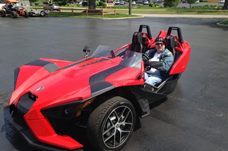
Ken “Hawkeye” Glassman has been a motor journalist for over 30 years, reviewing automobile, as well as motorcycle ride reviews and accessory reviews.
His car articles have appeared in Robb Report Magazine, Autoguide.com, Car-Revs-Daily.com and other media. His work has also appeared in Road Bike Magazine, Motorcycle Tour and Cruiser, SpeedTV.com, MotorcycleUSA.com and others.
As motorcycle columnist for The Daily Herald in suburban Chicago, the paper became the only major circulation newspaper in the country to have a separate weekly section devoted to motorcycles. Later he wrote a weekly column for Cyclefocus Magazine.

